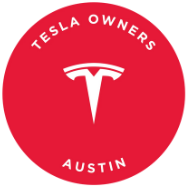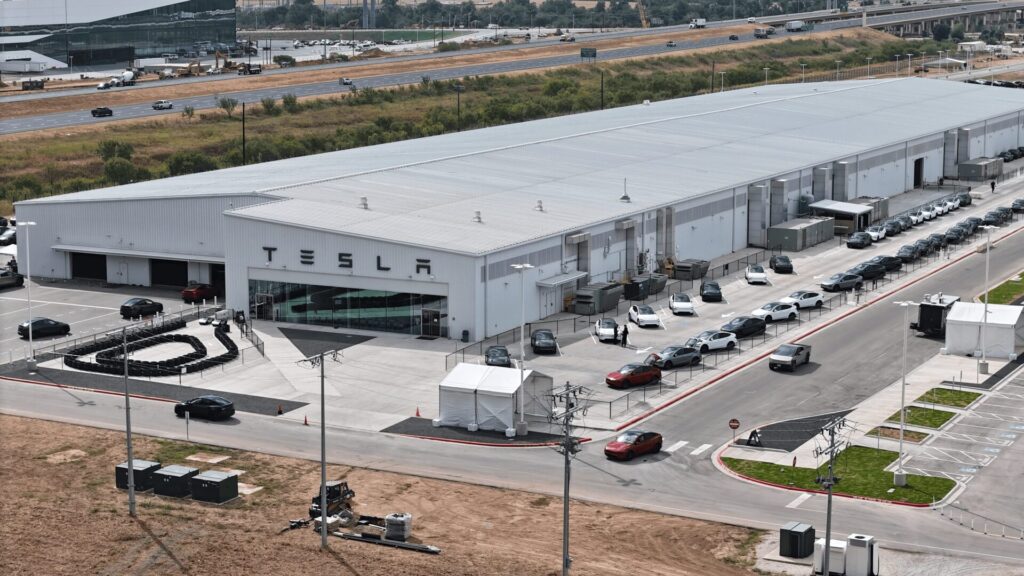Tesla is preparing for a significant end-of-quarter direct customer delivery event at Gigafactory Texas. Joe Tegtmeyer, a seasoned factory observer, recently shared images showcasing outbound lots filled with ready-to-deliver vehicles and new setups being established in anticipation of the event. This event will take place at Tesla’s new customer delivery center at the Austin Gigafactory, situated on the north end of the West End-of-Line (EOL) building.
The newly designed delivery hub aims to streamline the pickup process for customers, and it appears that Tesla intends to test its efficiency with a high-volume handover event as the quarter draws to a close. In a unique move, Tesla has even started offering customers the opportunity to ride in one of its Robotaxis to the Austin factory to collect their new vehicle, highlighting the company’s commitment to showcasing its latest innovations.
As of the latest reports, Giga Texas’ outbound lots are overflowing with Tesla EVs awaiting delivery. This end-of-quarter surge precedes the September 30 expiration of the $7,500 federal EV tax credit, which has been a driving force behind the increased demand for Tesla vehicles and other EVs across the United States.
The public delivery center itself exudes a festive atmosphere in preparation to welcome customers. Tegtmeyer observed new tents being set up and kid-sized Cybertrucks on-site, complete with a small driving course for children. This blend of efficiency and customer-friendly features has become a hallmark of Tesla’s major delivery events.
With Tesla aiming for a strong finish to the third quarter, the Giga Texas delivery event not only highlights the scale of production emanating from the factory but also underscores the company’s efforts to make the experience of picking up a new Tesla a memorable one. Customers visiting Austin for their delivery during this final week of the quarter may find themselves part of a significant milestone for the automaker.
In addition to the exciting developments at Gigafactory Texas, Tesla has also launched new winter wheel and tire packages for the Model S, Model X, and Model Y. These packages are now available through Tesla’s official online shop, providing customers with enhanced safety and performance during the colder months.
Furthermore, Tesla has quietly expanded its use of Live Activities on the iPhone, introducing the feature to cover mobile service appointments. This latest update to the Tesla app allows users to track the progress of their vehicle’s service in real-time, enhancing the overall customer experience.
Lastly, Tesla has secured a new U.S. patent for its innovative “True Unboxed Process 2.0,” which will be utilized in the production of the upcoming Cybercab. This patent underscores Tesla’s commitment to pushing the boundaries of manufacturing processes and delivering cutting-edge products to its customers.
Overall, Tesla’s recent developments showcase the company’s dedication to innovation, efficiency, and customer satisfaction, setting a high standard for the electric vehicle industry as a whole. The COVID-19 pandemic has had a significant impact on the global economy, with many businesses struggling to stay afloat amid lockdowns and restrictions. As countries around the world continue to grapple with the ongoing health crisis, experts are predicting that the economic fallout from the pandemic could last for years to come.
One of the industries hit hardest by the pandemic is the travel and tourism sector. With international borders closed and travel restrictions in place, airlines, hotels, and tour operators have seen a dramatic decline in revenue. Many businesses in this sector have been forced to lay off employees or shut down altogether, leading to widespread job losses and economic hardship.
In addition to the travel industry, the retail sector has also been severely impacted by the pandemic. With many brick-and-mortar stores forced to close their doors during lockdowns, consumers have increasingly turned to online shopping for their retail needs. This shift in consumer behavior has led to a decline in foot traffic at traditional retail outlets, resulting in lower sales and profits for many businesses.
The manufacturing sector has also felt the effects of the pandemic, with disrupted supply chains and decreased consumer demand leading to production slowdowns and layoffs. As countries continue to struggle with containing the virus, manufacturers are facing ongoing challenges in sourcing raw materials and shipping finished goods to customers.
The service industry, which includes restaurants, entertainment venues, and personal care businesses, has also been hit hard by the pandemic. With social distancing measures in place and concerns about the spread of the virus, many consumers are hesitant to dine out or visit crowded public spaces. This has led to a sharp decline in revenue for businesses in the service industry, forcing many to close their doors permanently.
While government stimulus packages and relief efforts have provided some relief to struggling businesses, the road to economic recovery is likely to be long and arduous. Experts warn that it could take years for the global economy to fully recover from the impacts of the pandemic, with some industries facing a more challenging path to recovery than others.
As countries work to contain the spread of the virus and ramp up vaccination efforts, businesses are hopeful that economic activity will begin to pick up once again. However, the long-term effects of the pandemic on the global economy are still uncertain, and many businesses are bracing themselves for a challenging road ahead. Only time will tell how long it will take for the economy to bounce back from the devastating impacts of the COVID-19 pandemic.

